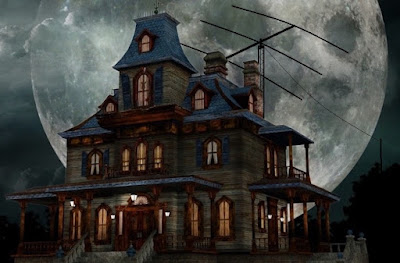Solar activity varies over an 11-year cycle and that makes a huge difference on the HF radio bands, especially from up here under the auroral oval. During the years of high solar flux levels the upper HF bands will regularly allow for global contacts but frequent solar flares and other disturbances will often cause complete radio blackouts that can last for days at this latitude. At the other extreme, during the solar minimum, the sun is quiet. There is little to hear on the higher bands but when the auroral absorption decreases some surprising contacts can be made from here on the lower HF bands.
One of the best things about this hobby is that there are 100 different aspects of it that can grab your interest. I've blogged about some of the different stuff I've been into over the years but most things related to the HF radio part of this hobby have better times than others to experiment. During the last rise to the top of the solar cycle I had a keen interest in contesting and DXing. I set numerous VE8 contest records and worked plenty of DX on the upper bands. Now that we're at the bottom of the cycle, one of the things I was planning to do was to put aside HF for a while and re-build my VHF/UHF station. I was looking forward to setting up for amateur radio satellites again and even trying some Earth-Moon-Earth and troposcatter communications. Then I decided to put it all on hold for a while.
Around this time last year I wrote about how I was working the 80m band with my upgraded antennas and the new FT8 digital mode. After confirming only 35 countries on 80m over the first 24 years of my ham radio career, I realized then that I probably could work 100 countries on that band in my lifetime and qualify for the 5-Band DXCC award. What I didn't know was that it was not only possible but I'll likely get there sooner than I ever would have thought. 80m is primarily a night-time propagation mode and we get a lot of that up here. In the winter I spend an hour or so on the radio in the morning before work and a couple of hours in the evening as well. Before I knew it, by spring time this year I had doubled my 80m country count to 70! So far this past month I've already added 14 more and we're not even into the November-December-January "80m prime time" yet. I'm 16 countries away from something I thought would take a lifetime and well on track to become one of the northernmost stations to ever make 5-band DXCC.
Every new one is thrill and the more DX I work the more I start to understand the low-band propagation up here. First and foremost is the aurora. If the K-index is 2 or more then forget about it, there's no DX to be had and often no signals to be heard at all. Fortunately, at this part of the cycle a high K-index is usually caused by "holes" in the sun's corona. Since the sun rotates on a 27-day cycle these come around on a predicable schedule. After a coronal hole rotates out of view on the solar disk conditions will begin improve. Every day the A-index (a daily average of the geomagnetic activity) will drop and after a few days 80m will come alive again. Once the aurora is dealt with then there are daily variations to watch for. For example, at this time our sunset coincides with midnight in the Caribbean and propagation from there peaks for an hour or so. Since this is around early evening here I will often have the radio on while I'm preparing dinner. When the nice JT-Alert lady announces "New DXCC" I go in, turn on the amplifier, and (hopefully) work a new one. Another regular enhancement is to the far East at our sunrise. Last weekend I knew that the VK9XG expedition to Christmas Island was on 80m FT8. I waited patiently and, sure enough, a few minutes before sunrise they popped up out of the noise and I made the contact. Even better still, we get an opening (when the A-index is low of course) over the pole to Europe at their sunrise. There's still a lot of countries over there that I have yet to hear on 80m!
The station continues to perform very well on the low bands. I re-oriented the half-sloper coming off my 80-foot tower to improve my signal to the North and that seems to have made a big difference to Europe compared to last season. I also took down the pennant receiving antenna that I put up last fall as it was much noisier than using my yagi for receiving. With the addition of a good preamp, the 17/20/40m yagi works well as an 80m receive antenna and it can be rotated as necessary to minimize any local noise. The TMR1090 amplifier is still working great although I often wish it was "instant on". It takes about 30 seconds to initialize and come on line but as soon as it does it will push a kilowatt on FT8 all day long. I've also been working on getting a small phased vertical receiving system put up that I hope will do better at signals that are arriving vertically polarized (I'll report back when I get that up and running).
The sun is very quiet these days and about two weeks out of every four currently have an A-index low enough for 80m DXing. The next few months should have the best low-band conditions since the last solar minimum.
DX is!
